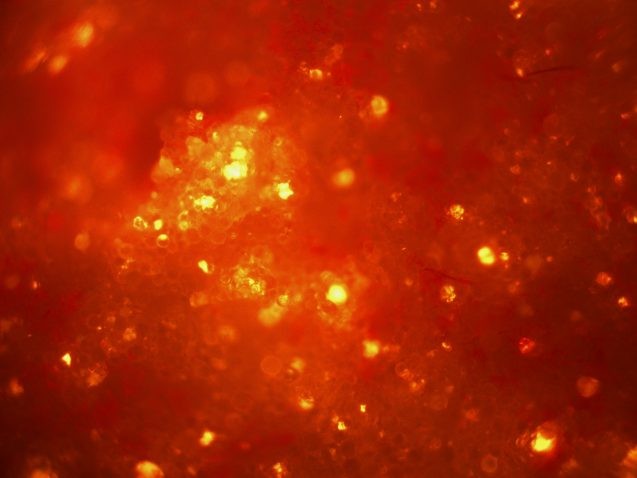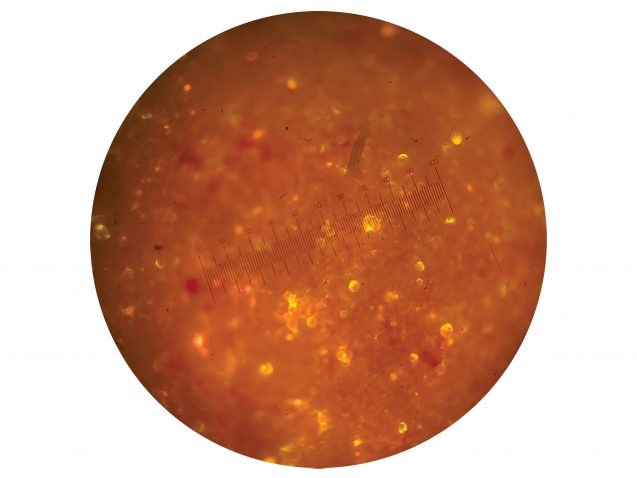Washing Laundry May Be An Underappreciated Source of Microplastic Pollution
A student research project unveils that tiny plastics in laundry detergents and fabrics could potentially have a big impact on ocean health.
Concerns over plastic in the ocean are growing in recent years. About 2.41 million tons of plastic waste enter the oceans every year, including approximately 15,000 plastic bags per day. However, most of the plastic waste (94 percent) is made up of microplastics — pieces of plastic measuring less than five millimeters across. This summer, three interns at Columbia University’s Lamont-Doherty Earth Observatory decided to focus their research on microplastics, specifically microbeads and microfibers. Mentored by Lamont marine biologist Joaquim Goes, the students Emmerline Ragoonath-De Mattos, Mariela Carrera, and Asya Surphlis uncovered a significant culprit of microplastic pollution that is largely overlooked: the washing of laundry.

Along with the pollution that microplastics cause, they are also entering the food chain as zooplankton and fish accidentally ingest them, and making their way all the way up to human ingestion through consumption of seafood. “We do not know enough about the long-term health effects of microplastics on humans,” explained Goes. “What we do know is that they serve as perfect vectors for transport of heavy metals, pesticides, pharmaceuticals and polyaromatic hydrocarbons, as of these compounds readily adsorb onto plastics.”
Microplastics are entering oceans through two main mechanisms: by traveling along with wastewater, and as a product of larger plastic being broken down. Wastewater treatment plants currently do not have filtration systems capable of filtering out microplastics.
The Microbead-Free Waters Act of 2015 aimed to reduce microplastic pollution by prohibiting the addition of plastic microbeads in personal care products such as facewash, shampoo, and toothpaste. However, this law did not regulate microbeads for industrial purposes. A common item that falls under the industrial category is laundry detergent. Asya Surphlis, a high school student intern working with Goes to examine the differences in detergents, found that all detergents she tested contained microbeads and microplastic fragments — including store-bought organic detergents, although in smaller quantities than non-organic alternatives. Of the detergents that Surphlis has tested so far, the most egregious results have been from an exceedingly popular detergent brand, which was found to contain approximately 178,000 microbeads in one milliliter of detergent. That’s equal to over 2.5 million microbeads per load of laundry. Surphlis explained that the exclusion of detergents from this law was a substantial oversight because of the ubiquity of laundry detergent. Unlike microbead-containing face scrubs or toothpastes, nearly every single household uses laundry detergent.

Yet it’s not only the microbeads in the detergent that contribute to microplastic pollution — the students found that microfiber shed is also exponentially increased by detergent’s interaction with fabrics. Laundry washed with detergent produces, on average, 86 percent more microfibers than laundry washed with pure water. This is most likely due to the general mechanics of how detergent works — by loosening fabric’s fibers for ease of cleaning. During the cleaning process, many small bits of fiber come off of the fabric and drain from the washing machine with the wastewater. So much so that synthetic microfibers make up 35 percent of plastic waste.
The research showed that not all fabrics are created equal. Some fabrics shed quite a bit more microfibers than others. Out of 32 tested fabrics, polyamide fabrics, popularly known as nylon, shed the most microfibers through the washing process. In addition, microfibers from different fabrics can have different levels of environmental impact. Some fabrics are made from biodegradable materials, making it so that any microfibers they shed are less of an issue for ocean health.
Goes’s students recommended that in the future, we can aim for better filtration systems in washing machines and wastewater treatment plants. For now, there are products that consumers can buy to filter microfibers out in the washing machine. Two such options are products called Guppyfriend and the Cora Ball.
The team’s conclusions included an explanation of the responsibility on the fashion industry to consider the environmental impact when choosing fabric during the designing process for clothing. They also urged that other industries can opt to switch from including microbeads in their products to an alternate biodegradable exfoliant.
This research can also provide important scientific data for future environmental policy decisions, and for the development of new technologies focused on reducing microplastic pollution in Earth’s oceans.
This research project was supported by the National Science Foundation Research Experience for Undergraduates.
Related: Press conference on the results at the American Geophysical Union fall 2019 meeting
